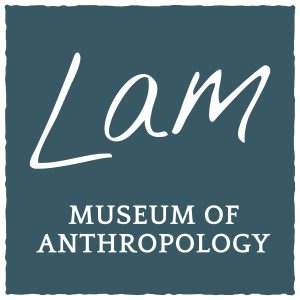New Name, New Look

The Museum staff is very excited to formally introduce our new name and logo. The logo of the Timothy S.Y. Lam Museum of Anthropology is representative of both the Museum’s global outlook and specific story. For an anthropology museum, the staff thought about visual elements that could represent the inclusiveness of humanity. Since anthropology covers all aspects of life, thought, and behavior, we looked for something broadly applicable while also distinctively human.
We initially thought of designs that invoked body parts connected to human exceptionalism: hands, eyes, brains, and even posture. However, we also wanted to avoid too closely connecting culture and biology–and ultimately it was hard to design a nice-looking brain. This led to thinking about creatively using the form of our logo’s font. The choice of a handwritten font invokes the human hand without actually showing it. It also captures other uniquely human qualities: tool use, language, and humankind’s capacity for abstract thinking.
The colored field behind the text is also representative of anthropology. We wanted the logo to contrast with other types of museums, particularly art museums. We noticed a strong theme in art museum logos toward formalistic minimalism. Simple shapes with clean lines, essentially. While many of the Lam Museum’s objects are great works of visual aesthetics, we wanted to emphasize the rough nature of ethnographic collections. The uneven edges of the colored field contrast with contemporary and modern art museum logos to signal our unique position on the landscape.
Finally, the color and shape of the field are directly inspired by the Tang period ceramics that were beloved by the museum’s namesake, Mr. Timothy S. Y. Lam. The square as a defining visual shape has been a dominant motif in Chinese art for millennia. The subtle blue-green is from the same sancai palette that revolutionized the medieval Tang world. The logo of the Timothy S. Y. Lam Museum of Anthropology reflects anthropology in the 21st century. It is an inclusive logo that represents global themes, while also containing clear references to the Museum’s history and legacy.
